 Crystal Microdermabrasion
Crystal MicrodermabrasionThe Post-Lockdown Boom Of At-Home Skincare Devices
What you need to know about the skin-changing tools that are here to stay.
The COVID-19 pandemic forced Americans to take beauty matters into their own hands, and, as part of that, we saw a surge in at-home tools and devices that promise to smooth, clarify, brighten, tighten, and calm (among other things). But despite all the well-intentioned youth-boosting, glow-inducing, gravity-defying efforts, did some people and tools take it too far? And, now that salons, spas, and doctors’ offices are fully open again, will these pricey tools become dust collectors relegated to the bottom bathroom drawer like that old curling iron you keep forgetting to get rid of?
It’s not a simple yes or no answer, and we tapped top experts to get a better sense of the value of at-home skincare tools and figure out what devices deserve to stay and what it might be time to bid adieu to.
Taking Matters Into Our Own Hands
When COVID-19 hit and each state put lockdown orders in place, dermatologists, plastic surgeons, and other aesthetic and cosmetic providers had no choice but to shut their office doors. As a result, Americans were relegated to performing beauty treatments on and to themselves at home for the first time maybe ever. Gone were the days of pampering manicures in the salon, hours-long hair coloring appointments, and lunchtime procedures to quickly rejuvenate and refresh the skin. In their place came DIY manicures and gel polish tutorials, loads of (lousy) box color dye jobs, and the sudden boom of an already steadily growing category in the beauty world: At-home skincare devices.
Even though at-home tools are nothing new and have been around for the better part of the past two decades, the segment of the beauty industry saw a fast burst in demand – and for a good reason. The pandemic made it difficult, if not nearly impossible, to schedule in-office treatments due to closures, staffing shortages, health protocols, and the risk of infection. These factors and others contributed to people placing more value and interest in at-home devices and skincare tools, says Brendan Camp, MD, a board certified dermatologist in New York City.
People realized they could no longer take care of their skin in the same ways since they weren't going for regular waxing, lasers, or facial appointments, “but they still wanted to see improvements in their skin and feel like themselves,” says Marisa Garshick, MD, a NYC-based board certified dermatologist. As such, “there was an increased interest in at-home skincare and at-home devices,” she adds. Plus, with more time at home, patients had the time to play around with something new. Work-from-home situations also play into the uptick of these tools, making them more in demand, notes to Ellen Marmur, MD, a board certified dermatologist in Manhattan and the founder of MMSkincare.
Generally speaking, consumers were leaning towards devices that provide similar results to in-office treatments, making laser and light devices extremely popular, says Mona Gohara, MD, a board certified dermatologist in Hamden, CT. “Laser hair removal devices were also becoming increasingly popular as consumers were unable to go to spas to get treated,” she shares. Dr. Camp agrees. “Some of the more popular devices include LED masks, facial muscle toners, low-level laser therapy hats (LLLT), and microneedling devices,” he says.
During the lockdown, makeup sales sharply fell while skincare and device sales were on the up and up. According to Kline Group, the beauty device market in the United States grew by seven percent in 2020. Attribute the forever-flourishing category to an increase in maskne, Zoom fatigue, and the desire for consumers to take their skincare efforts up a notch (especially when professional sources were limited). “This is when I think people started to realize just how effective many of the current at-home devices are and how far the market has come in terms of technology and results,” says Melanie Simon, and electrical aesthetician and co-founder of ZIIP.
Too Much of a Good Thing?
It goes without saying that at-home tools and devices don't pack as powerful of a punch as a professional can administer. Even so, they still can do a number on the skin when misused or overused, and the dangers of DIY dermatology are real. “Although at-home devices are marketed as safe for at-home use, it is important to note that they can still have risks associated with them,” Dr. Garshick shares. “Certain technologies can still potentially damage the skin when not used correctly.”
With this in mind, she advises sensitive skin types to start slowly and tread carefully when incorporating new devices and tools to minimize the risk of irritation. The same goes for those with darker skin tones. “Be particularly cautious to ensure that the device is safe for your skin tone, as some can run the risk of a burn or hyperpigmentation,” she warns. Some modalities – especially energy-based and hair removal ones – specify what skin types they are cleared for by the United States Food and Drug Administration (FDA). When in doubt, ask your dermatologist or skincare professional.
The skincare tools that don’t belong in any beauty cabinet (unless you are professionally trained): a lancet and a pore extractor. These are in nearly every aesthetician’s skincare toolbox to help open up closed comedones (read: blackheads) for easy extraction. In the wrong hands, however, they can do more harm than good. Improperly using the tool can easily damage the skin and the surrounding blood vessels.
Dr. Garshick warns of at-home microneedling devices, too. “For example, applying too much pressure with at-home microneedling devices and even rollers can cause broken capillaries and worsen redness for those with rosacea,” she says. Plus, it's a must to keep these tools clean and sterile, as they are in-office. Otherwise, they can easily spread bacteria. Post-inflammatory hyperpigmentation (PIH) is also a concern. Case in point: Dr. Camp saw a patient that developed hyperpigmented patches on the skin from overzealous use of an at-home microneedling device.
As far as at-home laser hair removal devices go, using them on the wrong skin tone and type can increase the risk of hyperpigmentation, burns, and scarring.
In-Office vs. At-Home Treatments
There is a lot that you can do for your skin at home. But there is also a lot that requires the expertise of a professional. According to Dr. Gohara, the most significant difference between treatments that have both at-home and in-office versions is the lack of guided expertise that occurs when you’re riding solo. “However, at-home devices are affordable, made for the consumer to use easily, and their accessibility is a huge benefit,” she notes. Before starting an at-home treatment, always consult with a board certified dermatologist first.
It can get a bit confusing when some technologies – microdermabrasion, microneedling, dermaplaning, and laser hair removal – are available for consumers and pros alike. “Some of these treatments, if used properly, may be safe, while others may not be,” says Natalie Aguilar, a celebrity aesthetician and dermatological nurse. She cautions against purchasing any device from an illegitimate retailer. “It’s risking your skin’s safety,” she cautions. “You can even find aftermarket professional lasers that can cause harm, even if used properly, on the wrong skin type.”
Dr. Garshick says some patients see good outcomes with popular at-home LED lights, IPL devices, laser hair removal systems, and microcurrent tools. “Other tools that have become widespread include jade rollers and gua sha to help with puffiness and improve overall circulation,” she adds. Aguilar notes that some spa locations use the devices that department stores and beauty retailers sell. “That’s fine because they work,” she shares. “But in-office treatments can be slightly more beneficial, as they are professional and combined with a facial.” Because not everyone has the time or budget for regular pro treatments, however, Aguilar says an at-home device can yield great results.
Generally speaking, “when you are at a credible office, chances are the device is more effective in one session than one session of a home device,” Dr. Marmur shares. “But, incrementally, the math might show that every 10 treatments at home equal one in-office session.” As Dr. Camp explains, the trade-off for making technologies safe enough for at-home, unsupervised use is a less robust treatment and result.
Even so, there are certain instances where in-office devices aren't necessarily better – especially when undergoing treatment by someone who is inexperienced, doesn't adequately understand the skin or its anatomy, or has no idea what they are doing. “You cannot assume spas or other offices have made the best selections of technology either,” Dr. Marmur says. That’s why it is imperative to visit a reputable practice with highly skilled and certified providers.
Maintenance Matters
At-home devices aren't the same as in-office ones, but they can be the next best thing – especially for maintaining results obtained through a professional. According to Dr. Marmur, many home devices can, depending on what skin issue you are handling, ‘stretch out’ the next procedure by about one month. She says this is often the case with her rosacea patients. In addition, some technologies are better studied, documented, and show more substantial results than others. “For example, LED low-level light therapy generates visible results that are proven,” she says.
At the end of the day, consistency is key when using these tools – and just as important is following the instructions. As Dr. Camp puts it, “Rome wasn't built in a day, and, similarly, results from at-home devices are often not as immediate as an in-office treatment.”
Here to Stay?
It’s been two years since we were all introduced to COVID-19. Mask mandates are being lifted, people are returning to work, and travel is resuming, but don’t expect the interest in devices to wane. In fact, many experts say the use of at-home tools will only continue to rise. “Consumers have realized how easy and efficient it is to receive spa-like treatments from the comfort of their home,” Dr. Gohara says.
Dr. Camp agrees that at-home skincare tools and devices are not going away. “People have not fully returned to the office and may not return to the levels seen before the pandemic,” he says. “As such, consumers want the option of at-home convenience when taking care of their skin concerns.” Likewise, Dr. Garshick adds that these modalities provide moments of self-care, which is still important and valued for many people. “I do not anticipate people will be as reliant on them solely as a method of treatment but will use them to complement in-office treatments and procedures,” she says.
Simon sees at-home devices – especially ones that have proven results and excellent consumer feedback – as something that is here to stay. “Take, for example, the ZIIP and the Droplette,” she says. “They make a difference and enhance the at-home beauty regimen.” Ultimately, convenience is key. “When you have something so user-friendly and effective for your skin at your fingertips, it's a no-brainer,” she adds.
The Best of the Bunch: Tech Talk
With hundreds (if not thousands) of devices to choose from that promise to lift, tone, brighten, and banish breakouts, it can be challenging to sift through the world of high-tech tools and find the perfect one. Plus, when you factor in their price tags, you want to ensure you're investing in the right product for your needs. Dr. Camp says some devices are FDA cleared, meaning they have undergone more rigorous evaluation and have needed to demonstrate their efficacy to earn approval. “An FDA approval is often a good sign the device is legitimate,” he shares.
But are any a total waste of time and money? The jury is out. Dr. Gohara says, “no, it's never a waste of money.” Instead, “it depends what you're looking for, and if you use the device properly,” she adds. Not everyone agrees. “In my opinion, some of the small wands that zap little spots or devices that require replacement batteries without being rechargeable are possibly not worth the return on investment,” Dr. Marmur says.
It’s all about managing expectations, Dr. Garshick emphasizes. For example, don’t expect a surgical result from an at-home device. “If so, chances are you will be disappointed,” she says. But, “if you are using them to help maintain results achieved with other in-office treatments or an at-home skincare routine and you don't mind spending the money, then these tools may provide some benefit,” she adds.
To make the process that much easier, we narrowed it down to the best tools and devices with the help of our experts — and there’s something for everyone.
The Tool: ZIIP GX Series
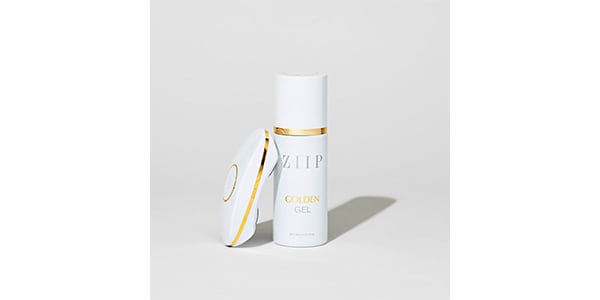
The Technology: Microcurrent & nanocurrent Why You Need It: Celeb electrical aesthetician Melanie Simon developed her palm-sized nanocurrent- and microcurrent-charged tool to lift, tone, and firm the skin with every use. Nano and microcurrent technology are electrical waveforms that mimic what human skin produces. Download the ZIIP app to be guided through concern-specific treatments that rival what Simon herself is known for. “Using an at-home device allows consumers to do professional-grade treatments on themselves in the comfort of the home regularly, which is exactly why I developed the ZIIP,” she says. “In addition, devices are fantastic for maintaining the skin in between office treatments and can often buy you more time between appointments.” Where to Buy It: $495, ziipbeauty.com
The Tool: Joanna Vargas Magic Glow Wand
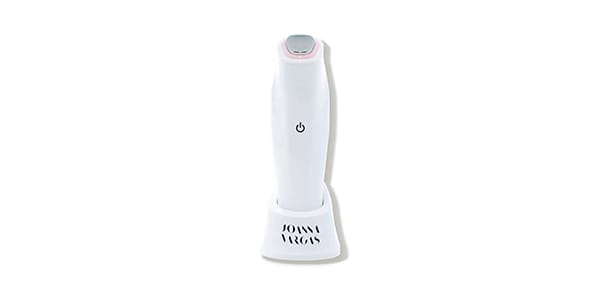
The Technology: Hot, cold, & massage Why You Need It: Harnessing a hot and a cold mode alongside massage, this glow-getting device works on contact to take down puffiness and instill a healthy look to the skin. Inspired by celebrity facialist Joanna Vargas’ highly sought-after lymphatic spa treatments, this wand dials up or down the skin’s temperature to counteract the effects of dehydration, dryness, puffiness, and poor blood circulation and revive that healthy glow. Plus, the massage option mimics the natural flow of the lymphatic system to carry away toxins. Where to Buy It: $285, dermstore.com
The Tool: My Skin Buddy 6x
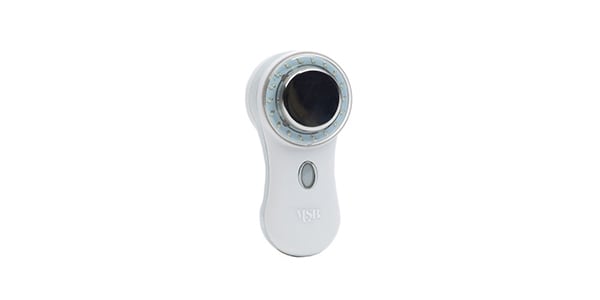
The Technology: Ultrasonic vibration, thermal heat, & LED therapy Why You Need It: Regardless if you’re trying to create brighter-looking skin, a more even complexion, banish blackheads, or fight the hands of time, this little skin buddy (hence the name) does it all. Choose from three different LED light settings — blue to bust up acne-causing bacteria, red for an anti-aging and collagen-boosting effect, and green to take down redness — and let the mini massaging and ultrasonic vibrating machine do its thing. It lifts, firms, brightens, reduces, and smooths… literally everything you could want and more. Where to Buy It: $349, myskinbuddy.com
The Tool: PMD Personal Microderm Elite Pro
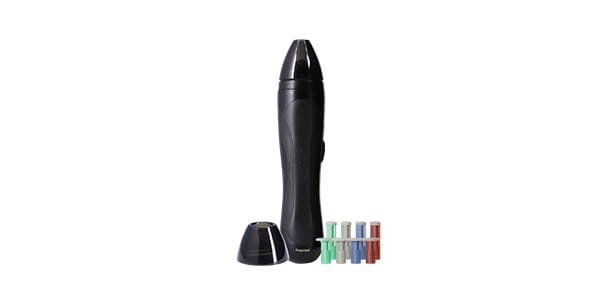
The Technology: Microdermabrasion Why You Need It: Microdermabrasion, which uses diamond-tip applicators to buff away dead skin cells gently, is one of the most tried-and-true skin treatments. This at-home version is small enough to fit in a travel bag yet customizable to your every whim. Choose from one of three speeds to gently yet effectively remove dead skin cells and reveal a smoother and more radiant complexion. Where to Buy It: $299, ulta.com
The Tool: SmoothSkin Pure Fit
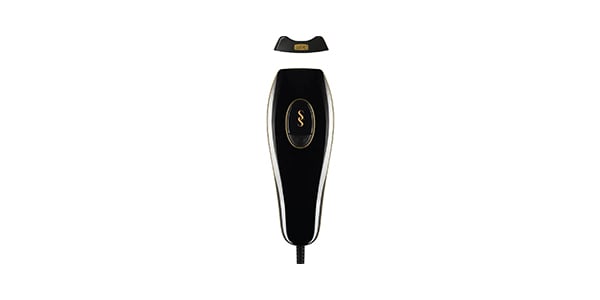
The Technology: Intense pulsed light (IPL) Why You Need It: Hair removal devices never fall to the wayside. This one features a detachable head to reach those harder-to-get-to areas, like right above the lip, and treats in just 10 minutes. Plus, it works with — not against — your skin tone. It’ll only funcion if it’s a perfect match, so you don’t have to worry about adverse effects. Where to Buy It: $379, us.currentbody.com
The Tool: MMSkincare MMSphere 2GO
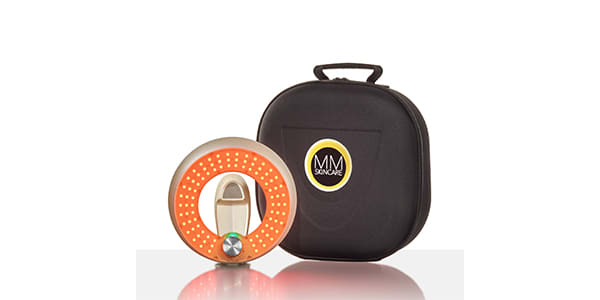
The Technology: LED light therapy Why You Need It: Designed by Dr. Marmur, who treats her patients in-office with professional-grade LED treatments, this at-home version is a portable option that tackles both skincare and wellness needs. Is hands- and contact-free and offers a multitude of LED lights (nine different ones to be exact), like blue (for acne), red (helps with sleep, inflammation, and collagen production), purple (combats breakouts and wrinkles), amber (mood-boosting), and green (to brighten skin and calm inflammation). Plus, Dr. Marmur says the tool showed a 38 percent improvement of collagen texture in two weeks or nine sessions, which is comparable to one IPL or BBL session for a lot less money. Where to Buy It: $395, mmskincare.com
The Tool: TriPollar Stop VX
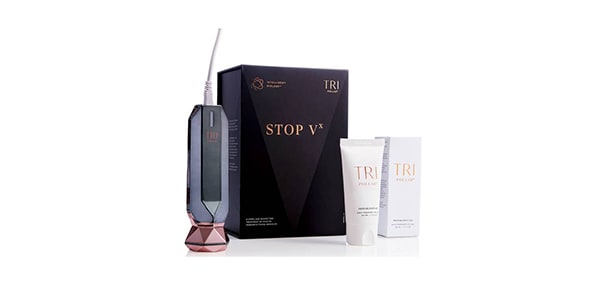
The Technology: Radiofrequency (RF) & ELV Why You Need It: If a saggy jawline is a concern, then this FDA-cleared wand delivers skin-tightening radiofrequency energy (similar to what's performed at a doctor's office) to improve tone and firmness. You’ll see a noticeable difference after one treatment, but, with continued use, the tone of the jawline and wrinkles are reshaped. Where to Buy It: $649, dermstore.com
The Tool: Sonage Baby Frioz Mini Icy Globes
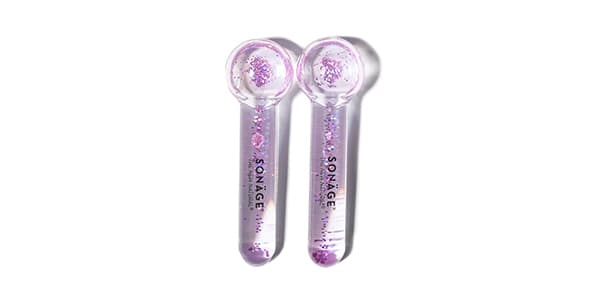
The Technology: Cryotherapy Why You Need It: Practicing cryotherapy increases circulation while decreasing inflammation and puffiness. Perhaps the most low tech (though no less effective) option of the bunch, all you need to do is pop these sparkly mini globes into the refrigerator and gently glide them across the skin to help depuff the under eyes, shrink pores, and wake up tired-looking skin in a flash. Where to Buy It: $54, sonage.com
The Tool: Dermalux Flex MD
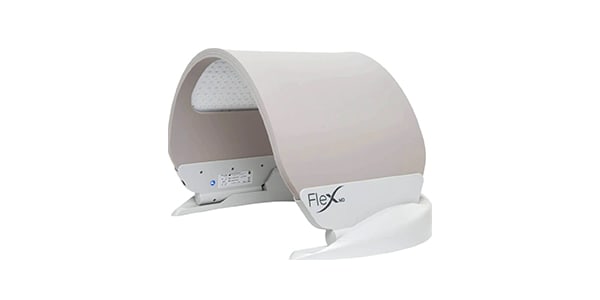
The Technology: 3 types of LED light Why You Need It: This is by far the priciest of the bunch, but, if you want serious professional-level LED therapy, then this gizmo is your guy. Utilizing blue, red, and near-infrared light emitted through 360 LED bulbs, 30 minutes under the portable hood works wonders for alleviating pimples, wrinkles, and even joint and muscle pain. Where to Buy It: $2,495, us.currentbody.com
All products featured are independently selected by our editors, however, AEDIT may receive a commission on items purchased through our links.
More Related Articles
Related Procedures

AI Plastic Surgeon™
powered by'Try on' aesthetic procedures and instantly visualize possible results with The AI Plastic Surgeon, our patented 3D aesthetic simulator.


